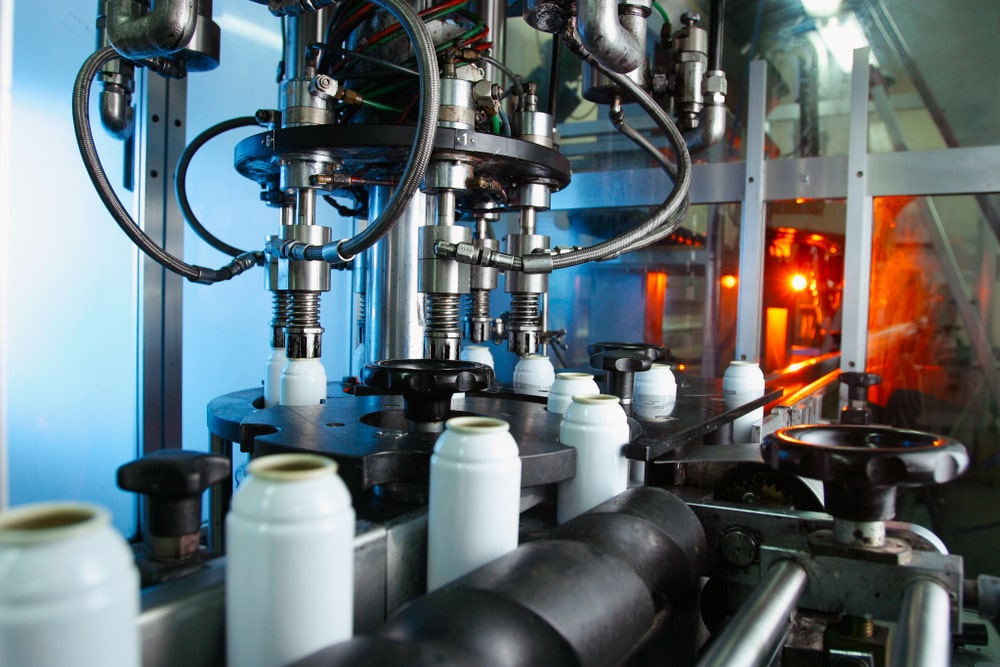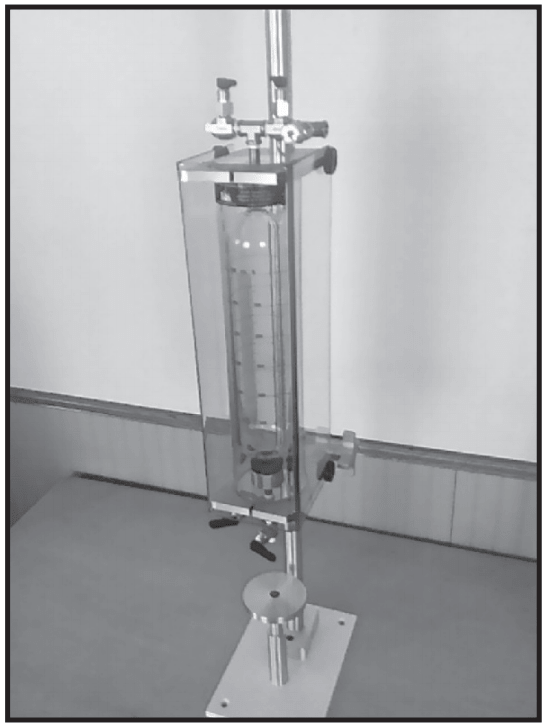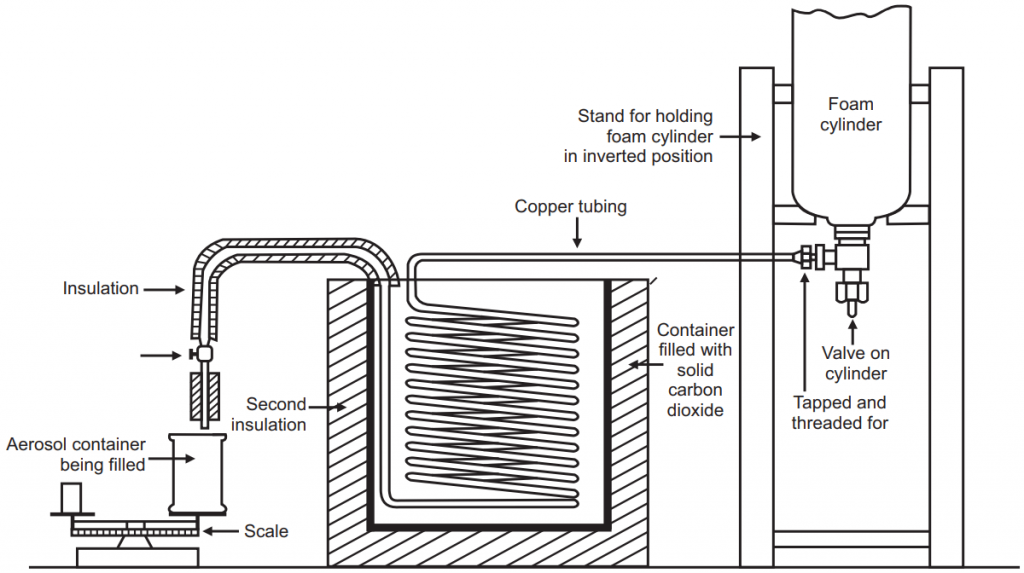Filling of Aerosols: Both manufacturing procedures and packaging are carried simultaneously. To prepare and package pharmaceutical aerosols successfully, special knowledge, skills, and equipment are required. The concentrate which contains the active ingredients, solvents and co-solvents, and other inert ingredients and may even contain a small portion of the propellant, is compounded separately and then mixed with the remainder of propellant. The following methods are used to fill containers with specialized equipment that are capable of handling and packaging materials at relatively low temperatures (about – 40oF) or under high pressure.

Pressure Filling Apparatus
The pressure burettes for filling aerosols are shown in Fig.1. The product concentrate is prepared at room temperature. The measured volume of the product concentrate is then added to the can. The valve assembly is crimped to the can. A cylinder of propellant is connected to the valve assembly of the can. The desired amount of propellant is added through the inlet valve located at the bottom of the cylinder under pressure. Trapped air is allowed to escape through the upper valve. When the pressure is equalized between the burette and the container, the propellant stops flowing.

To fill additional propellant a cylinder of nitrogen or compressed air is attached to the upper valve so that the added nitrogen pressure causes the propellant to flow.
Advantages:
1. Less propellant escapes into the atmosphere. Therefore it is environmentally friendly.
2. The filling procedure is carried out at room temperature.
3. Solutions, emulsions, suspensions can be filled successfully which are not possible with cold filling methods.
Disadvantages:
1. This method is not suitable to fill inhalation aerosols fitted with a metered valve.
2. This process is slower than the cold filling process.
3. High production speeds can be achieved.
Solution: Pressure filling equipment that fills through metered valves under high pressure of about 300 to 600 psig are available.
Precaution: Air entrapped in the container must be removed. Otherwise, this air may cause decomposition of the active ingredient or may give excessive pressure. This can be done by adding one or two drops of propellant into each can before adding the concentrate. The propellant will vaporize and expel most of the air from the can. Alternatively, the can must be actuated several times after filling to expel air (in the inverted position for the dip tube products and an upright position for products without a dip tube).
Production rate: 35 – 160 cans per minute.
Cold Filling Apparatus
The construction of the cold filling apparatus is shown in Fig.2. The product concentrate is prepared either by dissolving or by suspending active ingredients in the part of the propellant and/or a co-solvent. This product is then chilled to about –30OC. The chilled product is added to the previously cooled container. The propellant present in the cylinder is made to pass through the chilling unit. The chilling unit consists of an insulated box fitted with copper tubing that has been coiled to increase the area exposed to cooling. Coils are placed in a container that is previously filled with dry ice/acetone (chilling agent). The chilled propellant is finally added to the container. The valve assembly is crimped to the container.

Advantages:
1. This is suitable for both metered valves and non-metered valves.
2. This is suitable for fluorocarbon propellants.
3. This is simpler than the pressure filling method.
4. This is a faster process than pressure filling.
Disadvantages:
1. Some propellants may vaporize from the container before the crimping valve. Therefore it is not suitable for hydrocarbon propellants. An excessive amount of propellant escaping and vaporizing may form an explosive mixture at the floor level.
Limitations:
1. It is suitable only for non-aqueous products, which are not affected at low temperatures.
2. Solutions, emulsions, suspensions cannot be chilled.
Compressed Gas Filling Apparatus
The product concentrate is prepared and placed in the container. The valve is crimped in place. The air inside the container is evacuated using a vacuum pump. The filling head is inserted into the valve opening and then the valve is depressed. The gas is allowed to flow into the container. When the pressure within the container is equal to the delivery pressure, the gas stops flowing.
Since the compressed gases are under high pressure, a pressure-reducing valve is required. Attached to the delivery gauge is a flexible hose capable of withstanding about 150 pounds per square inch gauge (psig) pressure and fitted with a filling head.
For those products requiring an increased amount of gas, or for those in which solubility of the gas in the product is necessary, carbon dioxide and nitrous oxide can be used. To obtain maximum solubility of the gas in the product, the container is shaken manually during and after the filling operation. Mechanical shakers are also available for this purpose.
Make sure you also check our other amazing Article on : Sunscreen Preparation